Czech Republic Off the Beaten Path: After communism fell with the excited chants of Czechs filling the center of Prague, and Czechoslovakia peacefully split into two countries, a wave of tourism descended upon the capital city, the eventual size of which few would have predicted.
Prague has become one of the top tourist destinations in Europe, but it usually ends up being a one-city stop as part of a rather disjointed multi-country tour. What most visitors to Prague come away with is a dizzying look at the city’s historic architecture, clouded by the overwhelming number of tourists, with little sense of the Czech Republic off the beaten path, authentic Czech culture or what the rest of the country is like.
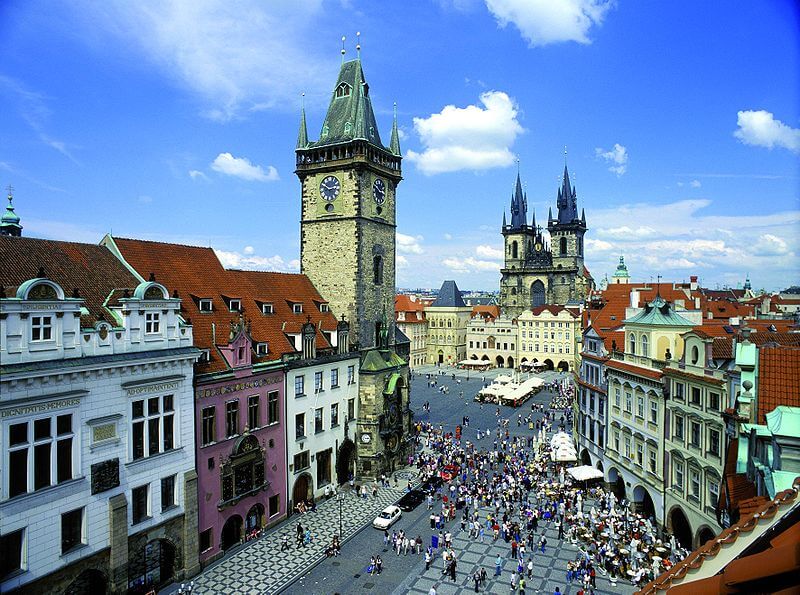
What might surprise people is how rich the culture and history are and how much there is to experience outside Prague. Take the number of Czech castles — with over 2000 castles and chateaux, it’s the highest number per square mile of any country!
These reflect the country’s complicated history. After all, ruling families from around Europe settled there, and the seat of the Holy Roman Empire was in Prague in the 14th century.

Besides historic monuments, the Czech Republic has so much more to offer, from mountains and rural wine country, to thriving university towns and picture-perfect historic architecture. The Czech tourism boards continue to develop plans to spread tourism beyond Prague and the handful of other usual sights (e.g. Český Krumlov, Kutná Hora, and Karlštejn).
I’d like to introduce people to the Czech Republic off the beaten path … a place they likely have never heard of, the region of Moravské Slovácko (Moravian Slovakia) and discuss the importance of preserving its cultural heritage.

Moravian Slovakia, the Czech Republic Off the Beaten Path:
Moravian Slovakia is the southeastern region of the Czech Republic, bordering Austria and Slovakia. I was fortunate to have had the opportunity to live abroad there in 1996-1997 and to have made several trips back there from 1998 to 2006. Its land includes the dense forests of low mountains and rolling hills, some covered in yellow mustard plants and sunflowers. It’s a beautiful area.
Moravian Slovakia is home to unique music, wine, folklore, and traditions. It was the center of the Great Moravian Empire more than 1000 years ago. It also has a number of historic palaces, gardens, and castles, including the UNESCO Heritage Site of Lednice and Valtice.
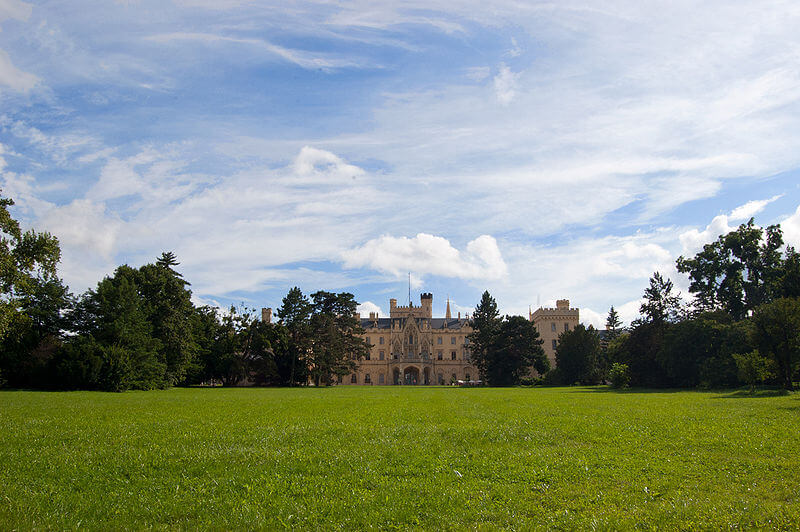
But the traditions of Moravian Slovakia may not stay visible for long. When the Czech Republic was finally free of the grip of communism, its economy grew quickly, and it has since been an example of success in the former Soviet Union.
Its population eagerly took on the challenge of assimilating into the rest of Europe after 1989. Many young people are well educated and speak good English. Some move out to other countries or relocate to the Czech Republic’s larger cities in search of good jobs.
In Moravian Slovakia, the traditional culture still lives in the small towns and among the older generation, but among most young people, an interest in preserving the traditions of home has (possibly unconsciously) been replaced by an interest in being part of the rest of the world.
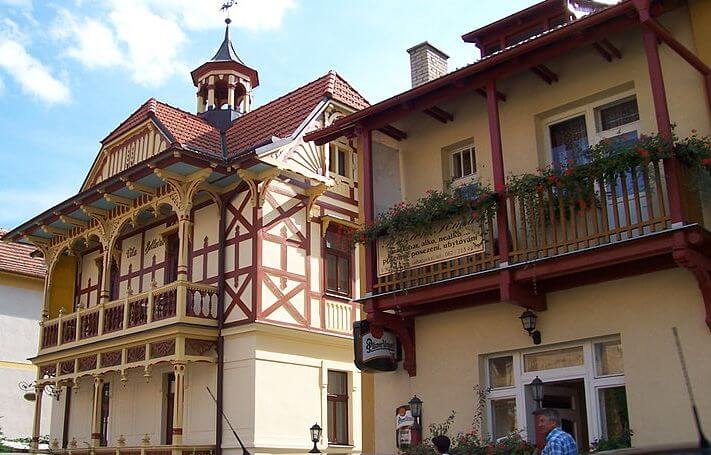
Globalization has had this effect around the world, creating a more connected generation in which people can make connections, get educated, and work in a kind of global culture, often at the expense of preserving traditions. At the same time, global tourism continues to grow every year, and tourism to developing regions is especially on the rise.
Such conditions mean that preserving local traditions is of the highest importance. Without that, the world’s unique cultures and traditions will barely survive in the future.
The importance of Moravian Slovakia’s culture:
As I discussed regarding tourism development in Brazil, developing tourism and preserving cultural heritage with a view toward what is sustainable for the long term is good for the local economy. It provides a wealth of sights and experiences for tourists; after all, most tourists travel to see something different, not something that seems like a copy of what is at home.
The combination of preserving those attractions for tourists to enjoy and providing ways for tourists to experience them easily (transportation, information) translates into a sustainable source of economic progress for the region. Without these, a region such as Moravian Slovakia will likely have the same fate as small towns in the Midwest of the United States. Young people increasingly move out, jobs leave, the population decreases, the economy weakens, and tourists have little reason to visit.
Therefore, if preserving cultural heritage is good for tourism and the economy, why should the culture of Moravian Slovakia be a priority for preservation? And how can people experience the cultural heritage of Moravian Slovakia?
Czechs’ love of nature:
First, the Czechs in general, but especially those who live in this rural area, have a close connection to the land. Many families have a cabin in the woods where they spend weekends. They love to hike and camp. They go mushroom hunting. Many people grow vegetables and tend fruit trees. The hills and forests of Moravian Slovakia are beautiful, and the people appreciate the land and feel connected to it.
Moravian wine country:
In a related vein, this is a big wine growing area, and local wine is a visible part of the culture. Friends meet at wine cellars in the evenings. Some families make their own wine and have a cellar under the house. There is an annual wine festival in September.
Wine cellars are a wonderful place to spend an evening — people share a table, order a jug of wine and snacks of bread and locally-made feta cheese, and sometimes groups crowd the cellar to perform traditional music. In Moravian Slovakia, tourists can hike, bike the country roads, ride horses, and get to know a bit of the region’s lifestyle while experiencing its wine culture.

Cultural sights in Moravia:
The region is dense with cultural monuments that reflect the area’s history, and by renting a car or using local buses, tourists could easily visit many beautiful castles, palaces, and formal gardens. The old hilltop castle of Buchlov, the Baroque palace of Buchlovice, and the UNESCO Heritage Sites Lednice and Valtice are especially worth visiting.
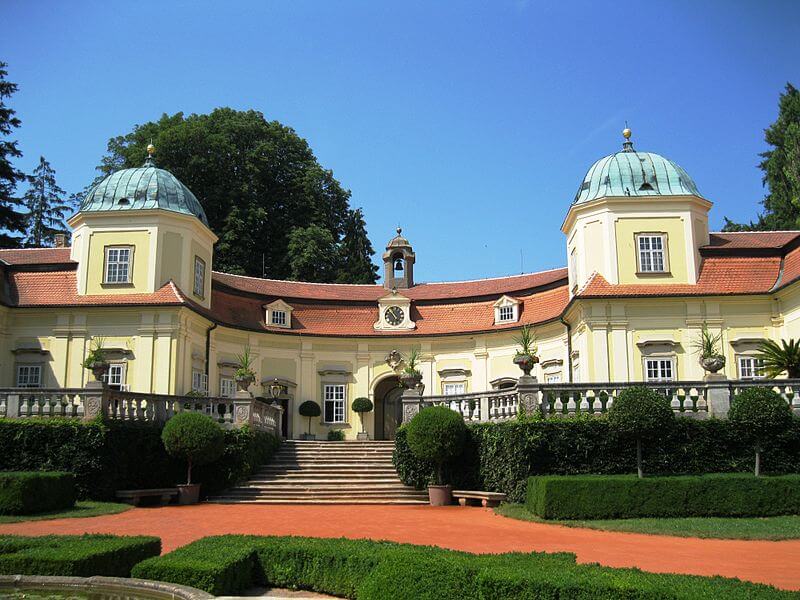
Moravian folklore:
Moravian Slovakia has its own unique decoration and folkloric aesthetic. These can be seen in the ceramics and glassware made in local villages and the way wine cellars and some houses are painted. Tourists could visit ceramics workshops and glass factories to see how the people continue these traditions, and the ceramics and glassware make wonderful souvenirs.
Folklore traditions are particularly strong in Moravian Slovakia, where they are still celebrated regularly at festivals and special occasions. The traditional costumes of this region are ornate and differ from one village to another.
The details of the costume decoration are passed down from one generation of women to the next. Many older women even wear simpler versions on a day-to-day basis. For tourists, this is the best region to see the traditions of music, dance, and costume from historic Czech folklore.
Festivals in Moravia:
UNESCO recently recognized four Czech traditions as examples of intangible cultural heritage; two of them are from the small region of Moravian Slovakia. One of them is the region’s best known festival, the Ride of the Kings in the village of Vlčnov. It has been celebrated there since 1808 (and in three other nearby towns).
The festival includes a show of costumes, dance, and music of each village and town. The most important part of the day is a parade of young men on horseback, all decorated with colorful ribbons and flowers, with one local boy chosen as the young king.
He is dressed in female costume to remember a story from 1469: after a defeat, King Matthias Corvinus retreated to his home in nearby Trenčín. According to the legend, in order not to be recognized, he dressed up as a girl, with a rose in his mouth and ribbons covering his face, as shown below:
The festivities are passed from generation to generation. The tradition of making the decorations, which vary from one village to another, is preserved by the women, while the men are responsible for preserving the activities and teaching the younger generations the process, chants, and other details of the festival.
The Ride of the Kings festival is an excellent way to experience the Czech Republic off the beaten path, to see Czech folklore and experience the pride of people celebrating their traditions as a community.
Being recognized by UNESCO as an example of intangible cultural heritage is an important step in preservation, and according to the UNESCO description of the Ride of the Kings, it is hoped that neighboring countries will be inspired to preserve similar examples of cultural heritage.
Making the preservation of cultural heritage should be a priority, first for the sake of community, and second for the sake of providing a sustainable way to generate the economy. People should be encouraged to be proud of local customs, and money should be set aside to preserve cultural monuments, like the decorated houses and historic castles mentioned above.
At the same time, tourism efforts can be improved in the following ways:
- promoting the appeal of the region’s cultural heritage
- making information available online and at tourist attractions in multiple languages
- establishing tourist information offices in the region’s towns
- hiring English-speaking employees at the region’s busiest attractions
- offering guided itineraries
What do you think about Czech Republic off the beaten path? Would you like to visit Moravian Slovakia? What regions with rich cultural heritage do you wish would work to preserve it?
(All photos are from Wikimedia Commons except the last one, courtesy Czech Tourism.)


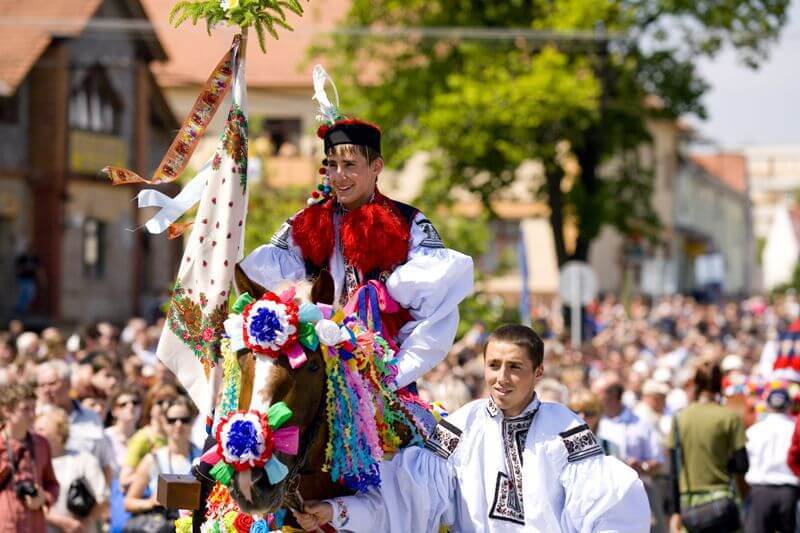
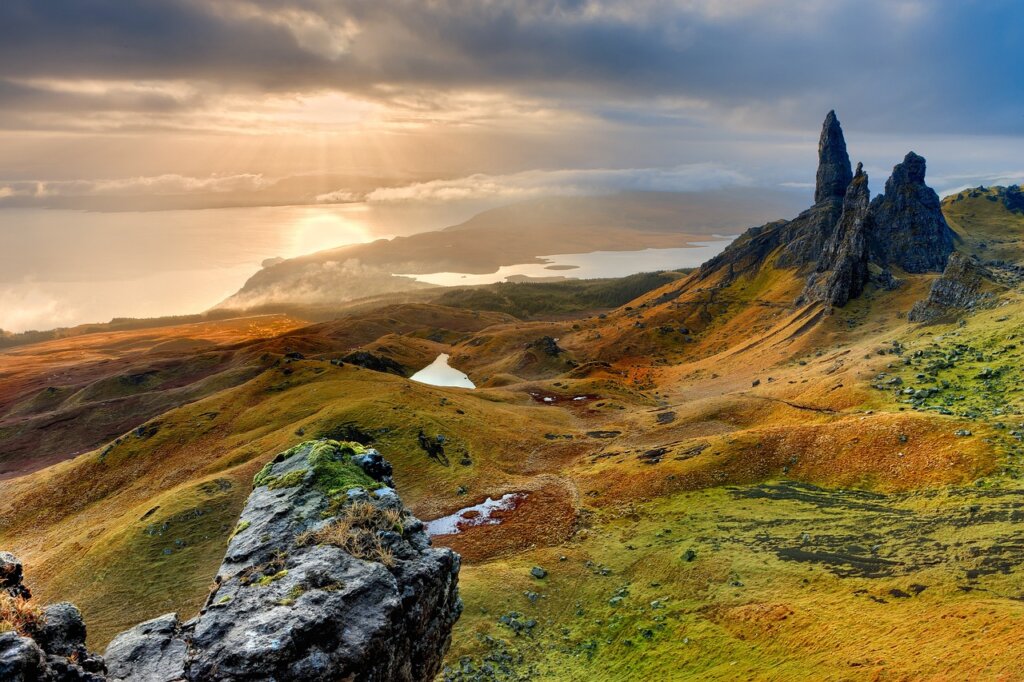
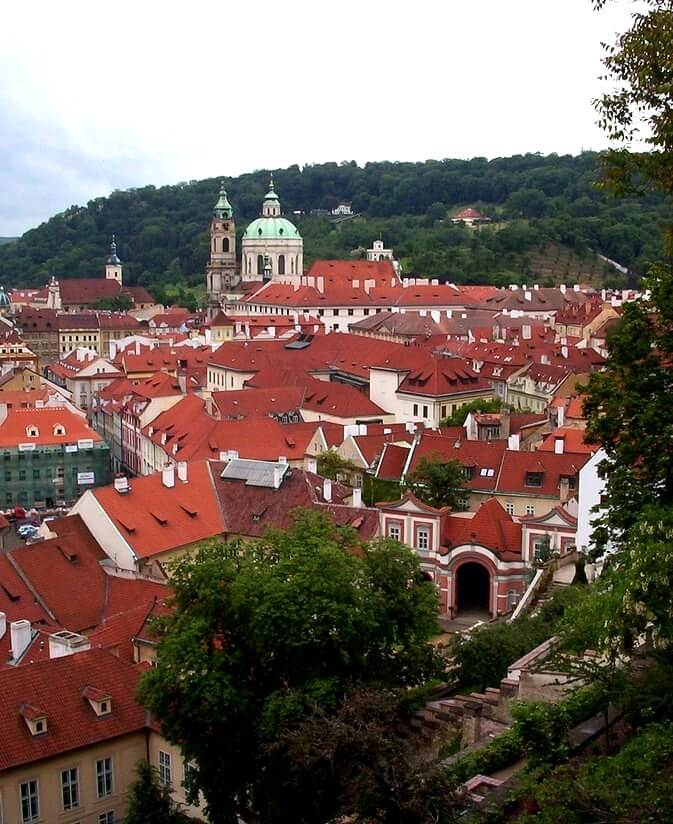
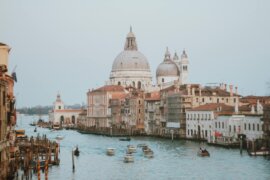
I’ve been to Czech Republic so many times I’ve stoped counting after 30th yet there’re still so many places for me to see and your post just made me realize that again!
Wow, I would love to be able to chat with you more about your travels to the Czech Republic. I don’t think I’ve met anyone who’s been there so many times. Sounds like you have been to Moravian Slovakia, so I hope you get there soon. Late May is good for the Ride of the Kings, and early Sept. is good for the wine festival.
oh I love talking to fellow travelers and Czech Republic is kind of special for me, for no particular reason. Polish people find Czech cute (that’s probably because of the language) and laid back and I think it started like that with me too. But then I started learning the language, getting to know more about the history or culture so I could understand the country and people better and now I’m really into it 🙂 Since it’s really easy to travel there from Poland I use every chance I have to go there, sadly last time was last October when I went to see the theatre play in Prague, now I miss it so much…
and what’s your story with Czech Republic? How did you end up there?
I, too, really want to know how Jenna ended up living there!!
The short answer is that my best friend from college was living there with the Peace Corps. The long answer is that after I graduated college, I traveled slowly around Europe to see more art and study German before going to grad school in art history. One of the stops was 3 weeks with my friend in one of the towns in Moravian Slovakia, and I fell in love with the area and the life she was living, so I moved there. It was one of the best things I’ve ever done.
This is such a fascinating and interesting post, Jenna. The Czech Republic has been high on my list to visit and I know very little beyond the sights of Prague and Český Krumlov. These pictures are beautiful and so inviting. I would definitely love to visit Moravian Slovakia and a witness to those festivals. It has so much to offer and I’ve always loved that mustard field picture you posted awhile back. Good luck with the conference!
Thank you for your kind words, Mary. You will love Prague and Český Krumlov, but I would recommend seeing more of the country for sure since those 2 places are very touristy. It’s easy to rent a car there and the country is small–you can easily pop into a couple towns per day and explore the countryside that way.
But even if you go to to Č.Krumlov and can’t make it to Moravia there’s so many more beautiful places in southern Bohemia: e.g. the towns of Tábor (founded by the religious Hussite movement in the 15th century and named after the biblical Mount Tabor), Jindřichův Hradec, Třeboň…, or even the administrative centre of the area České Budějovice (its German name may sound more familiar: Budweis). And then there are the villages which are known for what is called Peasant Baroque. The best known is Holašovice which is a UNESCO World Heritage site but there are actually dozens of them. I went there this summer for a short camping-cycling vacation with my family and really enjoyed it.
David, Thank you for all the tips. There is so much to explore in your country. I have not been to most of the places you mentioned but would love to one day.
I would definitely visit here. When visiting the Czech Republic, I think people should really get outside of Prague. I had the chance to visit a village called Trojanovice and loved it. The Czech countryside is beautiful and my best memories of the country are outside of Prague.
I haven’t heard of Trojanovice but am glad to hear you had the opportunity to visit a village and see what is typical life for many Czechs. I think you would really enjoy a place like this–the people are very outdoorsy, hospitable, and friendly. The men love to talk and play sports, which I know you would enjoy.
I don’t know that particular village either (I think it’s near Frenštát). It’s part of a region we call Valašsko or Moravian Wallachia in English, which lies just to the north-east of Mor.Slovakia. Another very interesting area.
We spent at least at least 6 days in that area. We visited the Wallachian Village Open-Air Museum, and went on a number of different hikes in the area. We loved it.
http://www.travelwithkevinandruth.com/2012/08/what-is-wallachian.html
Extraordinary insights into the Moravian Slovakian culture. Your article is a wealth of information that the tourism board itself should adopt to promote this historical city. What fun it must have been to be an adopted Czech for a day replete with costume and all. Talk about immersing yourself into a culture, I can’t think of a better way. You must have had the time of your life!
Of course your accompanying pictures really bring this foreign destination to life for all us who have yet to visit. Thank you for this fascinating journey to Moravian Slovia and boy, did I learn a lot. If you don’t win one of the prized spots in Florence, they’ll really be missing out on an opportunity to have someone like you, articulate, educated and passionate about celebrating a destination and preserving its cultural heritage for all to enjoy! GREAT JOB!!!!
Thank you for your encouraging comments, Jeff. I am glad you enjoyed reading about this region and the possibilities for visiting. Regarding your suggestion, I will contact the tourism board of the area and see if they’d be interested in using this article to promote tourism there. I am sending it to a couple of friends there, one of whom is now the mayor of one of these villages, in the hope that they will think more about cultural preservation and possibilities for attracting more tourism there (the mayor is already an advocate for the traditional folkloric culture).
What a wonderful introduction to Moravian Slovakia. I’ve visited Prague and loved it, but hope that I get to explore much more of the country. It’s wonderful if tourism can be cultivated while protecting the traditions, culture and history of Moravian Slovakia. Compelling photos & information – thanks!
Thanks, Cathy! I know how much you enjoyed your travels in central Europe and the holiday customs there, so I’m sure you would enjoy this area. I hope that if tourism can be developed in this region without sacrificing the cultural and environmental heritage that exists, it will actually inspire the population to preserve their traditions even more.
I agree completely, the Czech Republic is so much more than Prague. Glad you’re giving Moravia such loving attention; beautiful landscapes and warm-hearted people, doesn’t get near enough attention.
I’ve visited Prague, but I would love to step outside the touristy center and visit this town – those festivals sounds really interesting. I wholeheartedly agree with what you said about people traveling “to see something different, not to see a copy of what’s at home”. When you realize how homogenized a lot of the western world has become, you start understanding how important preserving local culture and traditions is.
So true about the world being homogenized. I even see that more and more in my students, who are almost all recent immigrants. No matter where they are from, they seem to have more in common culturally than before, partly because of technology.
Brilliant article, Jenna. I really enjoyed learning about the culture and the wine festival etc. Great job and photos. How WONDERFUL that you lived there!
Thank you, Charu, for your kind comment. Yes, it was wonderful living there.
We just finished a six week trip to eastern Europe, three weeks of which were spent in Czech Republic.
However, we only spent one day in Prague, and no, we had never been there before. Prague would have been great, if not for the tourists and the English being spoken on every street corner. It’s like going to Cancun and then saying that you’ve been Mexico. Well, I guess technically you have, but you might as well be in Miami.
We loved the small towns, and we loved that we didn’t hear another native English speaking person for almost the entire three weeks.
Great photos, I, too, think capitals often don’t show much of their countries’ cultures and traditions, and when they do, it’s often made on purpose for tourists, which is appreciated but inevitably sacrifices their authentic spirit. I’ve never been to Prague and would love to go as I’ve heard it’s stunning, but would really love to tour deeper inside Czech Republic. Your post is very inspiring.
I know what you’re talking about. I have heard many people say that one of their favorite experiences in Prague was a dinner for tourists with folk music, etc., but the idea of that just makes me cringe because I know that those things are so set up and not very authentic. However, I can understand why someone would enjoy it…I suppose it’s better than no exposure to the culture. When you go to the Czech Republic, let me know!
You make some great points Jenna. I visited the Czech Republic for the first time last February. I really only got to see Prague for a few days, but I would love to explore Moravian Slovakia. I sounds more like what I pictured of the country. While Prague is beautiful, it is so heavily touristy that I think at times it can be harder to get to know the culture in the truest sense.
Too bad that Prague was even that touristy in February. I hope in the future people will start traveling more outside the capital so that the rest of the country can be appreciated and maybe Prague will feel less crowded.
My gosh, I am so ignorant of the history of that part of the world — and this despite talking about it with my business partner, who lives in Prague. This was amazing. Thank you!
Thanks, Abby. You should visit that business partner of yours!
Thanks for the great article, Jenna. Moravian Slovakia is really special and I’m saying that from quite a unique perspective: I’m a Czech but an outsider to the region. My family moved to its biggest town sometime in the mid-80s when I was roughly 13-years old. And I must say it felt different. I soon realized that tradition and folklore were really alive and kicking there. For me as a teenager it was a bit strange because I considered all that old-fashioned but I found that all my peers were really proud of that heritage and considered that part of their identity. Moreover, they found it perfectly compatible with modern lifestyle –it was completely natural for them to spend one night at a disco or a rock gig, and do the folklore stuff the next day.
One more recollection: when I was 18, there was still military service in the Czech Republic. And all guys were summoned to the recruitment centre to see whether they were fit to be called up. Faithful to tradition, the boys from villages would turn up in their village costumes in a horse-drawn wagon and after the procedure they would go round the town, sing and drink wine. (This tradition disappeared in the late 90s when the army was professionalised.)
I know what you mean about the young people thinking the folklore is old-fashioned–I saw that among many young people from UH–but I like how you say that it is compatible with modern life. It’s essential to a culture to keep traditions alive because without them, we become almost the same. Thank you for your insights.
I’m ashamed to say I’ve been to Prague twice and never ventured outside the city. The countryside looks amazing. I’ll definitely explore next time. Argh – so much to see, so little time! I guess there are worse problems…
Yes, so much to see… If you liked Prague (and I guess you did since you went twice), you will love all that the rest of the country has. It’s so beautiful.
What a thorough post about a country I have yet to visit. I’d go to Prague but I prefer the small towns and cities to big ones – no matter how famous they are. I’m actually envious of the type of community Moravia enjoys. I miss not knowing all my neighbours and I think it speaks to a cultures richness to continue the traditions of folklore. Drinking wine with my friends in their vineyards, cycling the local trails…would love to visit.
Thanks, Leigh. I agree about the neighbors and community. One of the things I loved most about living there was the sense of community, and folklore definitely brings people together to celebrate their common past.
I would love to LIVE in Moravian Slovakia. Thank you for delving into its history and culture, I loved reading all about it. Plus local wine and countryside? I’m completely sold. What did you do while living there? I’m interested!
It was a wonderful place to live, almost boring but I liked that calm and peace. And there is SO much around there–Vienna, Budapest, Prague are all within a few hours by train, and all the beautiful places in the Czech Republic are easy to travel to. I taught English, a mix of part-time work, but I lived with a friend who was there with the Peace Corps. If you think about it more, I have contacts there still.
And I have another post about the area coming up, so watch for that!
Hi Jenna, a wonderful piece on a part of the Czech Republic that I’d definitely love to explore. Were you studying abroad in Moravian Slovakia?
The Czech Republic has always been a special place for me and my family since my first piano teacher was born there in the 1900s, in the outskirts of Prague. When we weren’t playing classical duets on the piano or when Mrs. Blonek wasn’t teaching me music theory, she would take out her black & white coffee table books featuring Prague from the 1930s, along with a tray of homemade Old World style cookies, and talk to us about life there. She left Prague in the late 1930s to begin a new life in the United States. Her life story is incredible; I could go on and on…
It’s true that Prague has so much to offer architecturally and culturally, but I would love to experience what you described here (mingling with wine makers, hiking in the forest, attending folk festivals – the costume and painted doorway are beautiful)!
Thanks for providing even more incentive to return to the Czech Republic. 🙂
Your teacher was lucky to get out of there when she did because the Czechs suffered terribly during WWII. Knowing your style of travel and interests, I think you would love traveling slowly through the whole country. A great way to do it is by car so that you can stop in small towns. If you do indeed get to this part of the Czech Rep., let me know! I would have some suggestions for you.
Jenna, it’s true that she and her husband were lucky to escape when they did. Sadly though, most of her family perished during the war. Though she later returned to Europe many times, she never returned to the Czech Republic. I suppose the memories were too painful.
I greatly appreciate your offer to provide pointers for visiting this region; thank you. I will keep you posted. 🙂
An interesting read and pretty pictures, especially of the mustard fields! I’ve never been to the Czech Republic, but I only want to go there more now someday. People always seem to forget that a country is more than just the touristy city or two!
You’ll love it! Wonderful nature, culture, beer, and people
Gorgeous photos! So glad to hear you enjoyed your time in CZ–I lived there for a year back in 2008-2009. The Czech Republic is the home of my grandparents, and I can remember that growing up I actually had a little “traditional costume” outfit that was quite similar to that one in your photo. Of course I’ve long since out grown it, but it was fun to wear when I was 9!
What a fun story! I would love to trade stories of living there with you sometime! 🙂
Just some tips to visit…
When you are in Prague and don’t have so much time to travel all abroad…
The most famous and one of the most beautiful natural area 1hr of car ride far from Prague is Český ráj(Czech heaven literaly): http://www.cesky-raj.info/en/
For some unordinary cultural experience and also under 1hr far away: Silvermines in Kutná Hora where is museum of medieval mine and silver http://www.cms-kh.cz/eng/medieval-silver-mine and a pretty shocking place for many people is Kostnice(ossuary) where everything inside is made of human bones http://www.ossuary.eu/index.php/en/ossuary
If you are happy and visit Moravia, the land of wine, sun and rustical customs you should definetly visit Olomouc http://en.wikipedia.org/wiki/Olomouc
And south of the Moravia(take some translator with you, there is almost no En. speaking people over 30 years old) – Mikulov and near by http://mikulov-palava.czech-mountains.eu/ . There is a few of the most beautiful hystorical buildings in few kilometers, Hluboká castle for example – http://www.zamek-hluboka.eu/en/.
As I am from the Cz.R. I like the taste of our beer so one personal tip to taste some from small breweries all abroad CZ in Prague(Pilsen and Budweiser are not the only one and for me not the best): Kulový blesk(no own EN site) http://www.tripadvisor.co.uk/Restaurant_Review-g274707-d3192062-Reviews-Kulovy_blesk-Prague_Bohemia.html or BeerPoint(also no EN site) http://www.praguebeergarden.com/pubs/post/beer-point. They are just my favourite.
Lea, Thanks for the tips. I have been to most of the places you mention and can agree that they are wonderful places to visit. As mentioned in this post, I used to live in southeastern Moravia and found the people to be very helpful and many of them to speak excellent English (including people over age 30).
What a wonderful treatment of the area! I came to become interested in things Czechoslovakian through my love for the sport of gymnastics. The Czechoslovakians made *enormous* contributions to the sport and were really the most influential and successful nation in the sport during the first half of the 20th century. Of course, if one does much of any research about Czechoslovakia, yes, they learn about the region of Moravia, and should discover that it has had a long history and was once a gigantic nation. The Moravian Church and the Unity of The Brethren are very interesting and have a very curious history and played a very significant role in the Protestant Reformation and counter-Reformation. One (obscure) gymnast I am interested in was from Valasske Mezirici, which I am sure you are familiar with. One question – when you say “Slovakian Moravia”, you seem to be referring to a place that is in the Czech Republic, so that confuses me a little. I found your page by doing a Google images search for “Wallachian Moravia”, just so you will know. You might also be interested to know that a few months ago, somebody posted some music of Josef Laza, who I am guessing might be the foremost singer of Folk Music of that area. Here is the link for that: https://www.youtube.com/channel/UCOLXq1a68Fp_Qk7b0RMZgWw
Thank you for this comment and information! Yes, the name of that area is Moravian Slovakia (I will check it–if I referred to it as Slovakian Moravia, it should be the other way around), I suppose because it is so close to the Slovak border where there was no border not that long ago.
And here’s the page on the Czech Tourism site about this region: https://www.visitczechrepublic.com/en-US/Things-to-Do/Places/Uncategorized/a-slovacko
Moravian Slovakia (“Moravské Slovácko”) is just a vaguely defined area based on its shared traditions, folklore and dialect. The music you shared is indeed from that region.
In the NE, it borders on another distinct region, Moravian Wallachia (https://en.wikipedia.org/wiki/Moravian_Wallachia). Actually, the name of the town “Valašské Meziřící” could be translated as “Wallachian (town) between the rivers”.
Thank you, David, for chiming in! 🙂